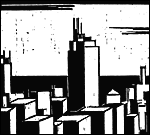Henry Louis Gates, Thirteen Ways of Looking at a Black Man Most of Henry Louis Gate's writing in this book appeared in the New Yorker. And the style of the magazine is evident. Gates writes fluently in each of these profiles that fit in into the milieu of the New Yorker. The profiles are of seven influential black men (James Baldwin, Albert Murray, Anatole Broyard, Bill T. Jones, Louis Farrakhan, Colin Powell and Harry Belafonte). When taken as a whole the book forges a fascinating portrait of some of the most notable men of our age. Gates explores the complexities, the "paradox" of being a black man in America. Henry Louis Gates' position as one of the best-known intellectuals in American afforded him astonishing access to some of the most celebrated figures in the country. But often his insight comes from friends of the subject (as is often the style of a profile), rather than from the subject itself. It is unclear whether he always hits the mark, but it is certainly beautiful writing. The title of the work comes from a poem by Wallace Stevens (Thirteen ways of looking at a blackbird). Gates maintains that black men in America have to decide which identity to align with. He says that there is no such thing ultimately as a dancer, general, religious leader or actor who just happens to be black. Their black 'identity' is central, but this identity is always complex and should not be typecast. His writing is readable and beautiful, a true master of the profile. MORE: A biography of Henry Louis Gates Excerpts from the book |
 |
|||||||||||||||||||||||||||